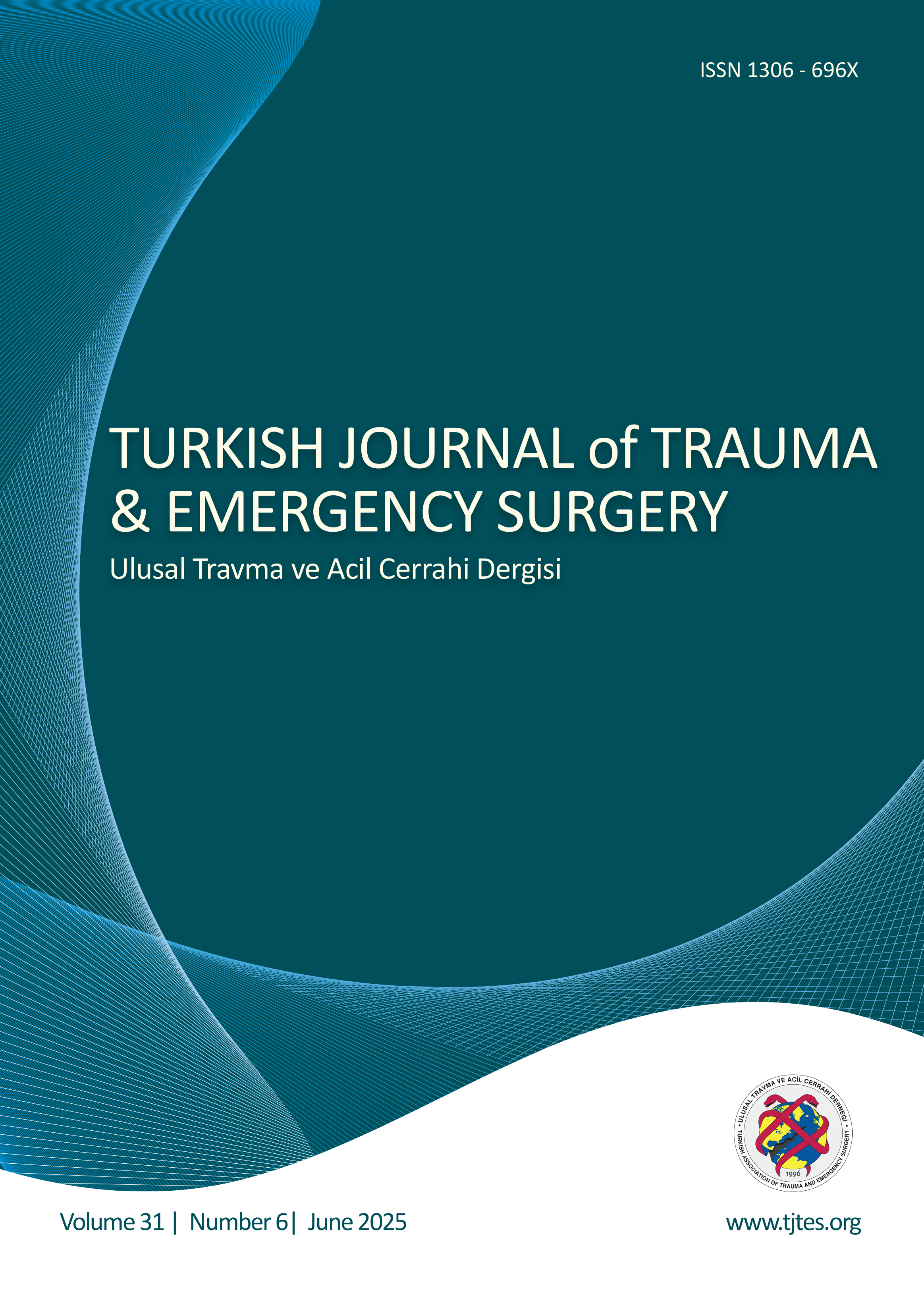Quick Search
Resuscitation complications encountered in forensic autopsy cases performed in Muğla province
Halil Beydilli1, Yasemin Balcı2, Şahin İsik2, Melike Erbaş3, Ethem Acar1, Bülent Savran31Department Of Emergency Medicine, Muğla Sıtkı Koçman University Faculty Of Medicine, Muğla2Department Of Forensic Medicine, Muğla Sıtkı Koçman University Faculty Of Medicine, Muğla
3Ministry Of Justice, The Forensic Branch Manager Of Forensic Medicine Institute Of Muğla, Muğla
BACKGROUND: The purpose of this study was to determine complications of resuscitation seen during autopsies and evaluate the effectiveness of basic life support training.
METHODS: Autopsy case reports conducted in The Forensic Branch Manager of Muğla were retrospectively examined. Demographic data of the patients with resuscitation complications such as age, gender, manner of death, and kinds and features of the complications were recorded.
RESULTS: In total, seventy-fourof the 100 cases with resuscitation complications were males. The autopsies in most of these cases were performed during the summer season. Among the patients, 68% died for non-traumatic reasons. Rib fractures were detected in seventy-one patients and sternum fractures in thirty-two patients. Moreover, damage to the pericardium (2%) and lung parenchymal (4%), heart lesions (4%), and liver lacerations (2%) were detected. Regarding rib fractures, fractures were found between the first and eighth ribs on both sides, with the highest numbers occurring in the fourth rib.
CONCLUSION: Resuscitation complications are important since they can be presumed to have carried out for traumatic reasons. Resuscitation complications seen in autopsy cases with non-traumatic causes can be perceived as traumatic events. They can be assumed incorrectly as trauma symptoms. These complications can be reduced with a good resuscitation training of the health personnel.
Muğla ilinde yapılan otopsi olgu sonuçlarında karşılaşılan resüsitasyon komplikasyonları
Halil Beydilli1, Yasemin Balcı2, Şahin İsik2, Melike Erbaş3, Ethem Acar1, Bülent Savran31Muğla Sıtkı Koçman Üniversitesi Tıp Fakültesi, Acil Tıp Anabilim Dalı, Muğla2Muğla Sıtkı Koçman Üniversitesi Tıp Fakültesi, Adli Tıp Anabilim Dalı, Muğla
3Adalet Bakanlığı, Muğla Adli Tıp Şube Müdürlüğü, Muğla
AMAÇ: Bu çalışmanın amacı, otopsiler sırasında görülen resüsitasyon komplikasyonların belirlenmesi ve temel yaşam desteği eğitimi etkinliğini değerlendirmektir.
GEREÇ VE YÖNTEM: Muğla Adli Tıp Şube Müdürlüğünde gerçekleştirilen otopsi olgu raporları geriye dönük olarak incelendi. Resüsitasyon komplikasyonları olan hastaların yaş, cinsiyet, ölüm şekli ve çeşitleri gibi demografik verileri ve komplikasyonların özellikleri kaydedildi.
BULGULAR: Toplam, resüsitasyon komplikasyonlara 100 olgunun 74ü erkektir. Bu olguların çoğunda otopsileri yaz sezonunda yapıldı. Hastalar arasında %68 travmatik olmayan nedenlerle öldü. Kaburga kırıkları 71 hastada, sternum kırıkları 32 hastada tespit edilmiştir. Ayrıca, perikart (%2) ve akciğer parankim (%4), kalp lezyonları (%4) ve karaciğer laserasyon (%2) hasarı tespit edildi. Kaburga kırıkları ile ilgili olarak, meydana gelen kırıklar en yüksek sayılarda dördüncü kaburga, her iki tarafta ilk ve sekizinci kaburga arasında bulundu.
TARTIŞMA: Resüsitasyon komplikasyonları önemli, çünkü bu komplikasyonlar otopside travmatik nedenlerle yapılmış sanılabilir. Travmatik olmayan nedenlerle yapılan otopsi durumlarında görülen resüsitasyon komplikasyonları travmatik olaylar olarak algılanabilir. Onlar, yanlış olarak travma belirtileri sanılabilir. Bu komplikasyonlar sağlık personelinin iyi resüsitasyon eğitimi ile azaltılabilir.
Manuscript Language: English



